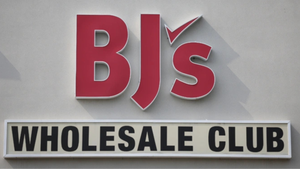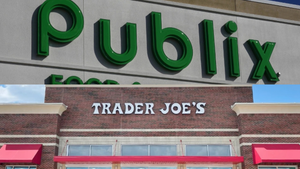June food-at-home prices jump over 12%June food-at-home prices jump over 12%
Value-seeking grocery shoppers turn to club and dollar stores
July 14, 2022

Elevated food and fuel inflation lifted the Consumer Price Index (CPI) to 40-year highs in June, according to the U.S. Bureau of Labor Statistics (BLS).
The CPI for All Urban Consumers rose 1.3% month to month (seasonally adjusted) in June, following increases of 1% in May, 0.3% in April and 1.2% in March, BLS reported yesterday. Year over year, inflation climbed further, rising 9.1% (unadjusted) for June. That marked the biggest 12-month gain in the CPI since the period through November 1981, BLS noted. The June uptick also was the highest 12-month increase so far in 2022, surpassing gains of 8.6% in May, 8.3% in April, 8.5% in March, 7.9% in February and 7.5% in January.
BLS said the food CPI, including food-at-home and food-away-from-home, climbed 10.4% year over year and 1% month to month and for June, edging up from respective increases of 10.1% and 1.2% in May, 9.4% and 0.9% in April, 8.8% and 1% in March, 7.9% and 1% in February, and 7% and 0.9% in January.
June’s food-at-home index jumped 12.2% year over year, hurdling the 11.9% rise in May and representing the largest 12-month uptick since the period through April 1979, according to BLS. That compared with steady increases since the start of the calendar year, including 10.8% in April, 10% in March, 8.6% in February and 7.4% in January.

All six major grocery store food group indices rose over the 12-month span through June, with five of the six up more than 10%, BLS reported. The index for other food-at-home saw the biggest increase at 14.4% year over year, with the index for butter and margarine escalating 26.3%. Increases ranged from 8.1% for fruit and vegetables to 13.8% for cereals and bakery products among the other groups.
The month-over-month rise in the food-at-home index remained sharp in 2022, up 1% in June after gains of 1.4% in May, 0.9% in April, 1.5% in March, 1.4% in February and 1% in January. The latter increase followed just a 0.4% uptick in December.
Meanwhile, the June index for food-away-from-home rose by 0.9% month to month and by 7.7% year over year, up from increases of 0.7% month to month and 7.4% year over year in May.
Excluding food and energy, the June CPI rose 5.9% from a year ago and 0.7% from a month ago, about the same as the upticks of 6% year over year and 0.6% month to month in May, according to BLS. Sky-high energy costs remained the chief catalyst in the June CPI jump, rising 41.6% year over year and 7.5% month to month. Gas and fuel oil prices surged 59.9% and 98.5%, respectively, versus a year ago. The monthly changes were an 11.2% increase for gas and 1.2% decrease for fuel oil.

Consumer market data specialist Numerator said that, for the four weeks ended July 3, grocery prices climbed 15.1% year over year, above the 14.6% increase in late May and more than doubling the grocery inflation rate at the start of 2022.
“As the cost of everyday goods continues to rise, consumers are shopping around to find value,” Eric Belcher, CEO of Numerator, said in a statement. “Many of these shifts — including high-income households trading down to dollar stores — are unexpected.”
Online continues to be the channel most impacted by inflation, Chicago-based Numerator noted. Online grocery prices escalated 21.5% year over year for the four weeks through July 3. Dollar is the only other channel at that pace, with an inflation rate of 19.8%. Wholesale clubs had the most stable grocery prices for the period, with inflation of 9.9% versus 12.2% for supermarkets and 13.9% for mass merchants.
Consumer spending remains at a high level, though demand may be softening, according to Numerator. Overall expenditures are up 13% year over year for the four-week period, yet units per trip fell 13%, a low for 2022.
In-store spending for the June period hit a 2022 high with growth of 24%, led by the club ( 15%) and dollar (14%) channels. Numerator said an increased number of consumers are looking for value and switching to club stores. Across all income levels, household traffic at warehouse clubs rose 9% year over year for the four weeks.
Similarly, high-income shoppers are going to dollar stores, whose sales gained 14% from a year ago as customers increased trips ( 4%) and spend per trip ( 9%). Numerator found that high-income consumers boosted their spending at dollar stores 13% during the period.
By category, beverages were the most-impacted department in the grocery sector in terms of inflation, Numerator said. Among the top-selling categories in grocery, five beverage segments ranked in the top 10 for highest inflation rates during the June period. Overall in grocery, the segments seeing the largest year-over-year inflation gains were frozen meat ( 28%), chips ( 26%), poultry ( 25%), water ( 22%), and milk/milk substitutes ( 17%).
Numerator added that household items’ rate of inflation has slowed. Prices for household items in the four weeks ended July 3 were up 11.3% year over year, down 5.9 percentage points versus mid-June, potentially impacted by early Amazon Prime Day deals in this sector, the consumer market researcher said. Paper and plastic products were the most-impacted household department, with five segments ranking in the top 10 for highest inflation rates. Household products experiencing the highest inflation increases included facial tissue ( 32%), plastic wrap and foil ( 27%), brooms/mops/brushes ( 27%), household batteries ( 27%) and disposable tableware ( 23%).
About the Author
You May Also Like






